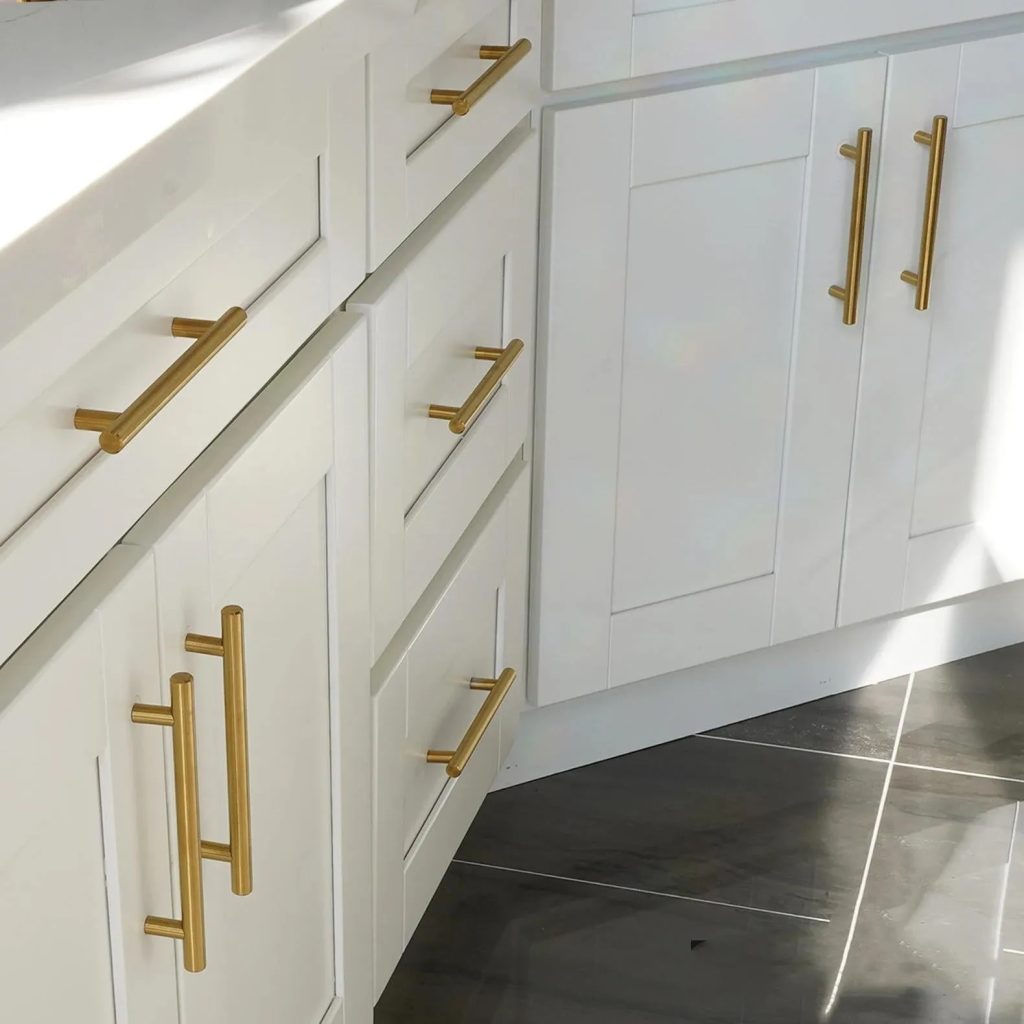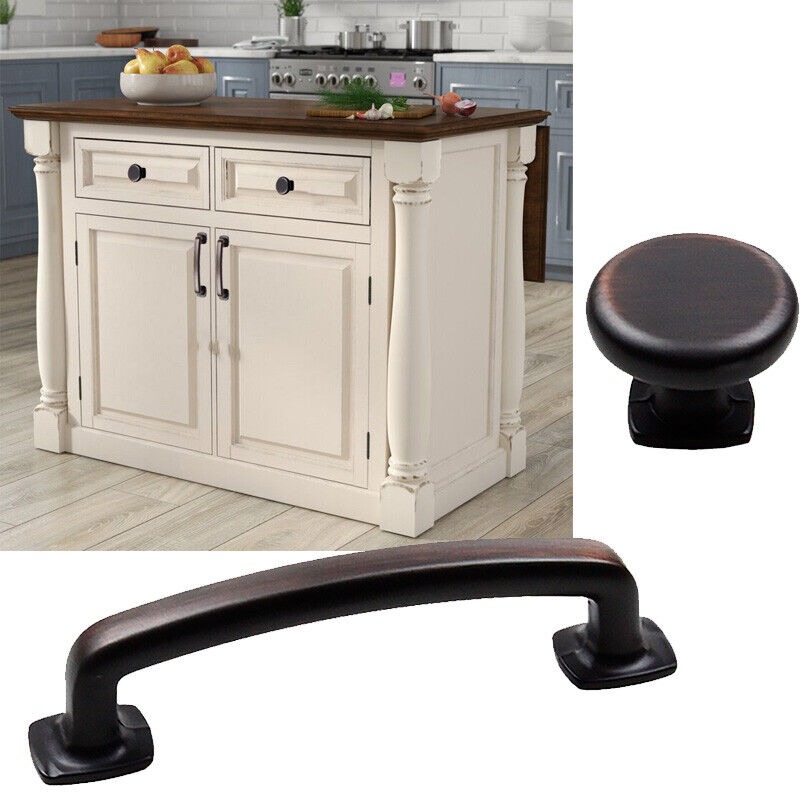Basics of Kitchen Cabinet Hardware
Selecting the kitchen cabinet knob placement can transform your kitchen’s aesthetics and functionality. It acts as both a style statement and a crucial functional element. Whether upgrading old hardware or selecting for a new kitchen, understanding the basics is key.
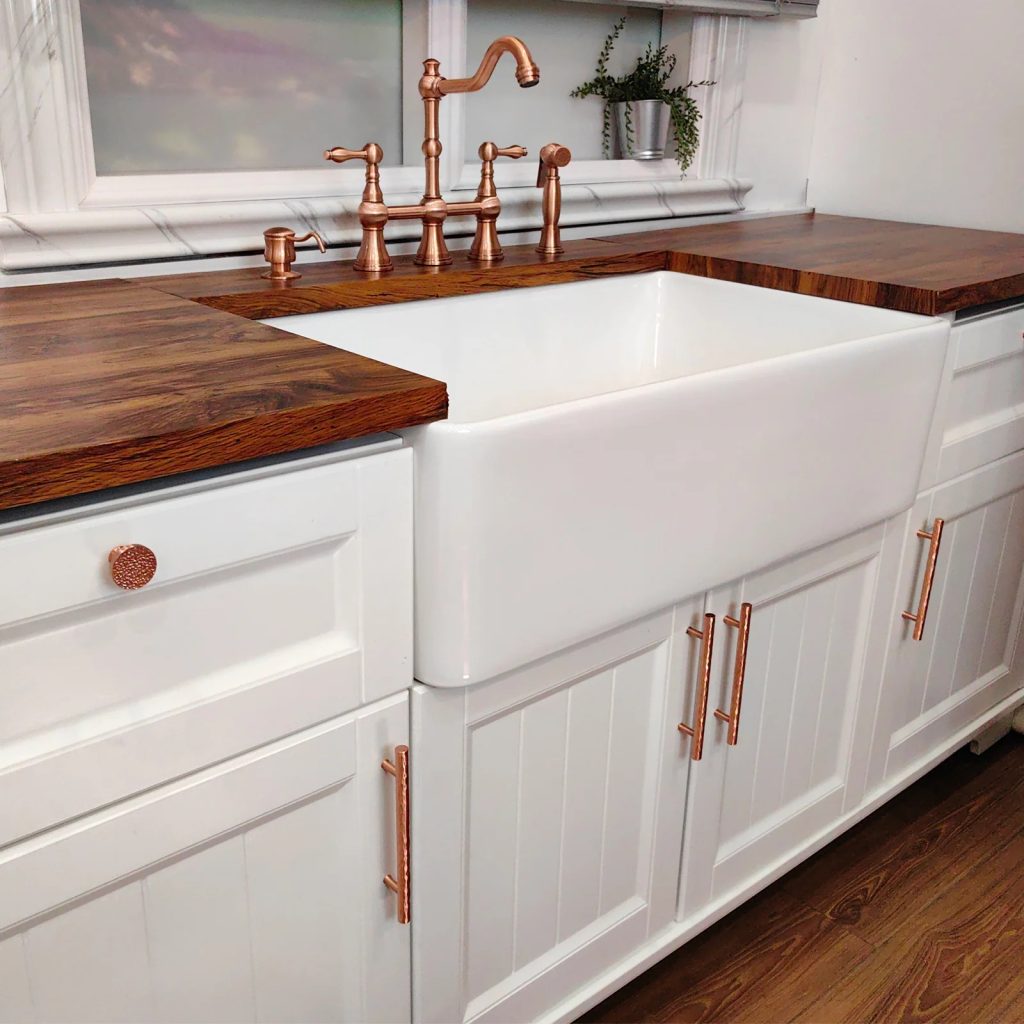
Types of Cabinet Handles
Two main types of cabinet handles are knobs and pulls. Knobs are small and round but come in various shapes and materials. They are ideal for a more traditional look and only require one-hole installation. Pulls, on the other hand, offer a modern look and better leverage, making them suitable for larger drawers. They require two holes for installation, providing stronger support.
Choosing Between Knobs and Pulls
The choice between knobs and pulls depends on your personal preference and kitchen style. Knobs are generally used on cabinet doors while pulls are ideal for drawers. Think about your kitchen’s overall design and ease of use. Pulls are often easier to handle, making them great for heavy drawers. Consider your family’s needs, such as ease of use for children or elderly family members.
Design Considerations for Knob and Pull Placement
When planning your kitchen’s layout, every detail counts.
Visual Balance and Aesthetics
Positioning hardware impacts your kitchen’s look and feel. Aim for a consistent, harmonious design. Choose placements that complement cabinet lines and styles. Symmetry often adds to a kitchen’s visual appeal.
Functionality and Ease of Use
Hardware should blend design with practicality. Place knobs and pulls where they naturally fit the hand. Consider the daily use of each cabinet and drawer. Make sure placements support comfortable and effortless operations. Easy access is crucial for all family members, including kids and seniors.
Detailed Placement Guidelines
Navigating the myriad options of cabinet knob placement can be daunting. Here, I will simplify the process with easy-to-follow guidelines based on industry standards and design principles.
Placing Knobs on Doors and Drawers
When positioning knobs on cabinet doors, aim for the corner of the door panel. Typically, place knobs 2 to 3 inches from the bottom or top edge of the door. On drawers, center knobs both horizontally and vertically on the drawer face. For wider drawers, consider two knobs placed equidistant from the center for balanced aesthetics and functionality.
Installing Pulls on Cabinets and Drawers
Pulls on cabinets should mirror the placement of knobs – opposite of hinge sides for ease of opening. Vertical pulls on cabinets are usually 2 to 3 inches from the upper corner. On drawers, align pulls with the center horizontally and at the upper third vertically. For longer drawers, ensure pulls are about one-third the length of the drawer for a sleek look and easier access.
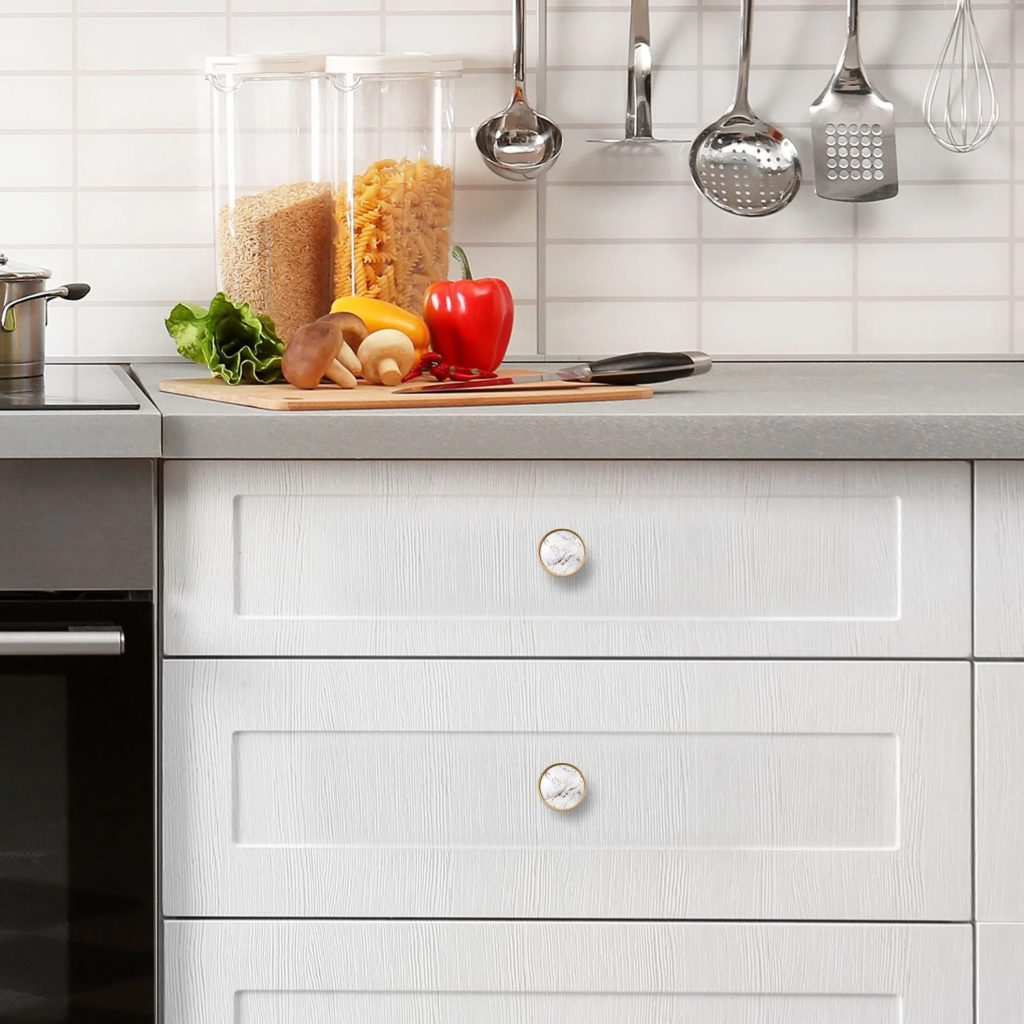
Special Considerations for Appliance and Cup Pulls
Appliance pulls demand attention to detail due to their size and use. Match them with your cabinet hardware, and install at a height that offers leverage and comfort. Cup pulls, often used on lower drawers, should sit on the upper third or on the top rail of the drawer front. Position these for ease of grip, keeping in mind the natural hand reach when opening drawers.
By adhering to these guidelines, you can ensure your kitchen cabinet knob placement is both functional and aesthetically pleasing. Make choices that enhance the usability of your cabinets, while also contributing to the visual harmony of your kitchen space.
Tips for Choosing the Right Hardware
Choosing the right hardware for your kitchen cabinets can significantly enhance their look and functionality. Here are some key considerations to help you make the best choice.
Matching Hardware to Cabinet Style
- Analyze your kitchen style: Identify whether your kitchen has a modern, traditional, or transitional style.
- Complement the cabinetry: For modern kitchens, sleek and minimalistic hardware works best. For traditional settings, classic knobs and pulls are ideal.
- Consider the finish: Match your hardware finish to other fixtures in the kitchen, such as faucets or lighting, to maintain consistency.
Importance of Size and Proportion in Selection
- Measure accurately: Ensure that you measure the cabinets and drawers to determine the appropriate hardware size.
- Proportional sizing: The hardware should be proportional to the cabinet or drawer size. Larger drawers may require longer pulls for a balanced look.
- Functional comfort: Choose hardware that is not only aesthetically pleasing but also comfortable and practical to use daily.
By keeping these tips in mind, you can select hardware that complements your kitchen’s style and enhances functionality.
Installation Best Practices
Proper installation of cabinet knobs and pulls is crucial for a seamless kitchen makeover. Use these best practices to achieve a polished and professional look.
Tools and Techniques for Accurate Placement
Accurate placement of hardware is essential for functionality and aesthetics. Use a measuring tape to find the precise spot for installation. A template or jig can ensure consistent placement across all cabinets and drawers. Mark the spots lightly with a pencil before drilling. Use a level to verify that each mark is perfectly horizontal or vertical.
When ready, drill pilot holes for the screws. Go slowly to avoid splintering the wood. Attach the hardware by hand at first. Tighten with a screwdriver to ensure a secure fit. Remember to measure twice and drill once to prevent errors.
How to Avoid Common Installation Mistakes
Avoiding mistakes is easier with the right preparation. Measure all drill points accurately before starting. Check that your hardware and cabinet materials match to avoid corrosion or damage. Don’t rush the installation process, as mistakes can be costly. Be mindful of the hardware size relative to drawer width, as unsuitable proportions can impact usability.
If you’re unsure about placement, use detachable adhesive strips to mock up the hardware position. This allows you to test the placement before making any permanent changes. Consult design guides or professional advice if needed. With a careful approach and attention to detail, you’ll create a polished and professionally finished kitchen.
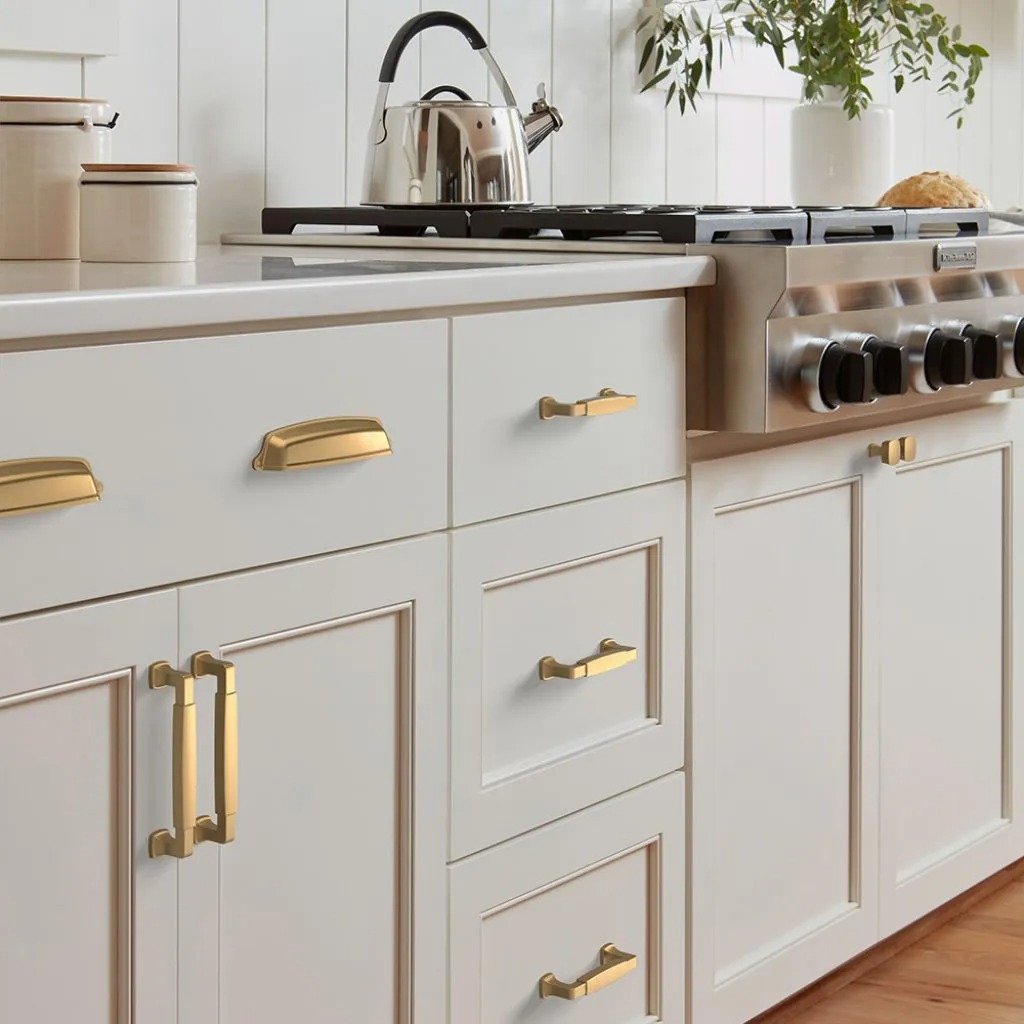
Enhancing Kitchen Aesthetics with Hardware
The Impact of Hardware on Overall Kitchen Design
Kitchen cabinet knob placement isn’t just about functionality; it can significantly affect your kitchen’s aesthetic. Selecting the right hardware pieces, such as knobs and pulls, contributes to your kitchen’s overall theme and can be a focal point. The style, finish, and placement of your cabinet hardware can either complement or transform the design of your kitchen. From sleek, modern pulls to classic, decorative knobs, every choice plays a role in the room’s appearance.
Choosing consistent hardware finishes, like polished nickel or antique brass, offers a cohesive look. Mindfully mix knobs and pulls to add depth and variety without overwhelming the space. Consider the cabinetry’s color and grain when choosing hardware to highlight these features or add a contrasting element.
Creative Ways to Use Hardware for Kitchen Makeovers
Cabinet hardware offers endless possibilities for creative kitchen makeovers. For a fresh look, replace dated hardware with modern, elongated pulls that stretch nearly the full drawer length. Add character to a traditional kitchen with vintage-inspired knobs. If your space needs a subtle upgrade, simply change the hardware’s finish for an updated feel.
For drawers wider than 24 inches, think about installing two knobs or pulls. This can enhance both functionality and style. Use cup pulls for lower drawers, to give a classic look that’s also easy to grip.
Get creative with hardware placement. Try knobs on upper cabinets and pulls on lower drawers for a mix that’s both practical and visually appealing. Explore the use of backplates to add an extra design element or to protect the cabinetry finish from wear and tear.
Remember that kitchen cabinet knob placement is not just a detail—it’s a design opportunity. Use it to refresh your space, reflect your personal style, and enhance the functionality of your kitchen.
